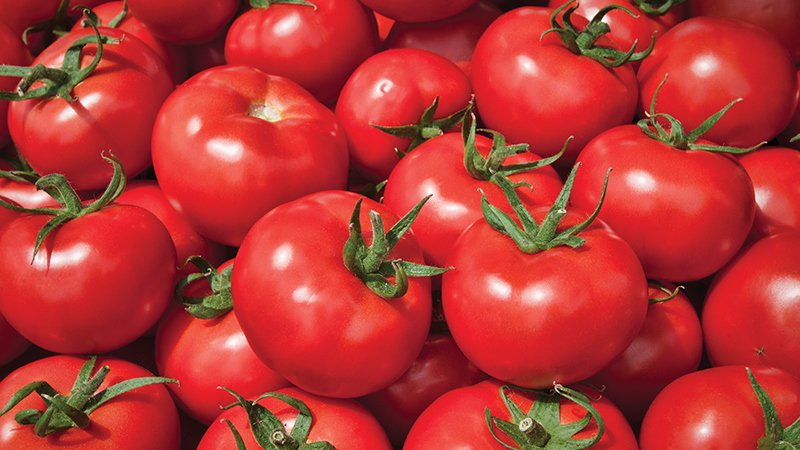Herbicide Product Options Abundant for Berry Growers
Manufacturer labels on chemical weed controls are subject to change at any time. In addition, various educational resources that guide growers on the ins and outs of treatments are susceptible to error, Matt Bertucci, Assistant Professor of Horticulture at the University of Arkansas, says.
Fortunately, digital platforms, such as CDMS and Greenbook, remedy those problems, he says. But growers still have to log in and do the leg work.
“Any time you’re doing chemical control, it’s going to be your responsibility to read the manufacturer’s label,” Bertucci says. “These digitized versions are extremely helpful to navigate. I would hope most people are making use of technology now.”
Prior to verifying with CDMS or Greenbook, berry growers can adhere to a reputable educational resource, he says, such as the 2022 Southeast Regional Blueberry Integrated Management Guide.
“It’s got your fungal recommendations, your insect recommendations, and also has a lot of recommendations for weeds,” Bertucci says.
As for the commercial treatments now available, Bertucci offers the following info:
Preemergence Herbicides
- Diuron (Direx, Karmex, Adama) — This product exemplifies why growers should heed labels, Bertucci says. Contrary to what the Southeast regional guide states, the herbicide is labeled for Florida. Also, it is a Group 7 herbicide, according to the Weed Science Society of America (WSSA), rather than a Group 2.
- Flumioxazin (Chateau, Valent) — Growers should realize that, despite successful sprays, dust from treated soil can get on the leaves and cause symptoms. “That’s something we actually see when this is applied on soybeans,” Bertucci says. “When you have a really hard rainfall and the soil splashes up, after an application with flumioxazin, you can see symptoms on the lower canopy.”
- Isoxaben (Gallery, Dow AgroScience; Trellis, Corteva) — A quality product, Bertucci says, it nonetheless might need to be tank-mixed with trifluralin (Treflan, Gowan). In fact, Dow AgroSciences has created an herbicide, Snapshot, that combines the two active ingredients. “You might prefer to purchase Snapshot rather than buying isoxaben and trifluralin separately. I leave that to your own discretion,” he says.
- Indaziflam (Alion, Bayer) — This same active ingredient has a label for use on roadsides for vegetation management and is known for its very long persistence. “That could be a problem if you’re trying to introduce new crops. So indaziflam is really not popular in annual production systems because of its long residual activity,” Bertucci says. “But that could work to your benefit if you have long residual control of weeds in your perennial cropping system.”
- Mesotrione (Callisto, Syngenta) — Growers who get this bleaching herbicide on their crops will see some lightening of their leaves, Bertucci says.
- Napropamide (Devrinol, UPL) — The product should be cultivated or irrigated to a depth of 2 inches within 24 hours of application. “This material really needs to get moved into the soil quickly relative to the others,” Bertucci says.
- Rimsulfuron (Matrix, Corteva) — Rimsulfuron is a useful product that is effective for control of sedges. Because it is from the same chemical family as halosulfuron, those products should not be used together or in succession. However, its label ran out April 30. “It’s good that it is a preemergent. That probably means it should (have been) down before April 30. But just beware (of this),” Bertucci says. “This happened with strawberries with clopyralid. We had a moment where we lost registration for a period of six months because no label was available.”
- Simazine (Princep, Syngenta) — This product will also have postemergence activity, Bertucci says, “So we want to make sure we don’t get that on the crop itself.”
- Sulfentrazone (Zeus, FMC) and sulfentrazone/carfentrazone (Zeus Prime, FMC) — These protoporphyrinogen oxidase (PPO) inhibitors are effective for the preemergence control of purple and yellow nutsedge.
Postemergence Herbicides
- Carfentrazone (Aim, FMC) — The product can be used alone or with sulfentrazone in the aforementioned Zeus Prime.
- Glufosinate (various trade names) — Growers should be aware that this commonly used product is not effective for goosegrass control, Bertucci says. “Its effectiveness is reduced when temperatures drop or when weeds are stressed. Certain conditions might lower the efficacy of this particular product,” he says.
- Glyphosate (various trade names) — Very effective but also systemic, so if it is accidently applied to any part of the blackberry plant, major injury is possible, Bertucci says.
- Halosulfuron (Sandea, Gowan) — When it comes to eliminating yellow nutsedge, this is the “workhorse product,” Bertucci says.
- Quinclorac (Quinstar, Prime Source) — The product is good for certain grass species and many broadleafs, Bertucci says.
- Paraquat (Gramoxone, Syngenta) — This restricted-use pesticide requires a grower to be a licensed applicator, Bertucci says. “Its signal word is ‘danger poison.’ You actually need to go through specific training now if you want to use paraquat on your farm,” he says. “They’ve increased the labeling for every container now to say ‘Danger: One sip can kill’ because people weren’t convinced when they just called it ‘Danger: Poison.’









